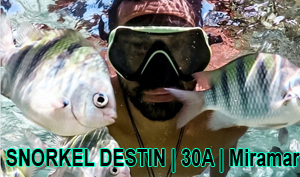Santa Rosa Beach FL – Hard to spot – “like specs of pepper” Sea lice are actually the microscopic larvae of jellyfish and other ocean stingers which contain the same nematocysts (stinging cells) as their parents. In many areas of the Gulf and Caribbean also sometimes found in Indonesian sea the primary culprit causing “sea lice” infestations is the larvae of jellyfish.
These larvae, sometimes half a millimeter in length or smaller, can become trapped between the bathing suit and skin or in crevices like the armpit and compressed, causing the stinging cells to fire. These occur in salt water off coastal regions. Sea lice usually attach themselves to fish but clearly can bite humans. Turtles actually eat jellyfish, so we should be kind to the turtles to encourage more breeding, which in turn would enable less jellyfish.
 Treatment
Treatment
 Treatment
Treatment
- Remove swimsuit and shower immediately after bathing
- Wash bathing suit in hot water with detergent before wearing again




















